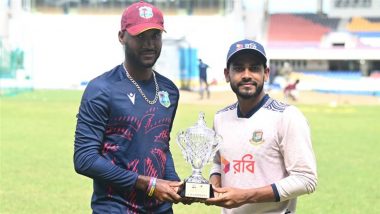New Delhi, Nov 11 (PTI) Tutorials should be provided to children living in observation homes so that they can return to mainstream education, the National Commission for Protection of Child Rights has recommended.
Observing that education has not been a "priority" at these homes, the apex child rights body recommended that teachers be deputed to these homes to help the children with their education.
It has also recommended that observation homes need to start intervention on education soon after the child, who is in conflict with law, is referred to a home.
In a report on 'Availability of Quality Education and Vocational Training in Observation Homes in India', the NCPCR recommended that tutorials be provided to rehabilitated children to regular schooling.
The study covered 50 observation homes where around 2,691 children are lodged.
"A whopping majority of 42 homes did not have a separate budget or funds earmarked for education of children living in these homes. The majority of homes are being run by the Government except 4 homes managed by NGOs," the report said.
"It seems there is no dedicated budget provision in government homes which infers that education has not been a priority in the scheme of activities with the children in conflict with law," it said.
"It is imperative to ensure that these children do not drop out from the school for the reason that they came to an observation home. It is highly recommended to depute teachers at observation homes under the Sarva Siksha Abhiyan," the report said.
The Juvenile Justice Act mandates that children found in conflict with law be sent to a special home that provides reformative services like education, skill development, counselling, behaviour modification therapy and psychiatric support during their stay.
The initiative has been undertaken to see in detail if the provision of education and vocational training is being provided to the children living in these homes, an NCPCR member said.
The recommendations were made based on a study that was conducted by the ThinkingSkills Consulting and supported by NCPCR.
"Education and vocational training for children in conflict with law requires a different dimension because of their background and their living environment. Moreover, the need for education and vocational training for this group of children is paramount," said Ashish Aggarwal, CMD of the ThinkingSkills Consulting.
In a survey of 50 observation homes across the country, the NCPCR said it was found that considerable percentage of children are either school drop outs or have never gone to a school.
"Therefore, if it is found that the child was not in a school before coming to the Observation Home, authorities should immediately admit the child in the NIOS (National Institute of Open Schooling) after counselling and deciding the course based on the interest and suitability of the child," the NCPCR said in a report.
The study also said that the scheme of Special Training Centre (STC) should be established in all Observation Homes.
"Children need such programme given their educational attainment and their status of being out of school. This will act as bridge in connecting these children with the formal school or open schooling," it said.
The NCPCR also stressed on the need to provide skill development centres at observation homes.
"The existing skill programmes running in some of the observation homes are traditional in nature and need to be revamped to match the present day demand of skill set. Therefore, the Ministry of Skill Development may be approached to conduct a situational analysis for transforming these programmes into Skill Development Centres," it said.
Vocational training shall include occupational therapy, skill and interest-based training, aimed at suitable placement at the end of the course, the report said.
There are about 293 observation Homes for children in conflict with law, according to NCPCR data.
(This is an unedited and auto-generated story from Syndicated News feed, LatestLY Staff may not have modified or edited the content body)













 Quickly
Quickly




















